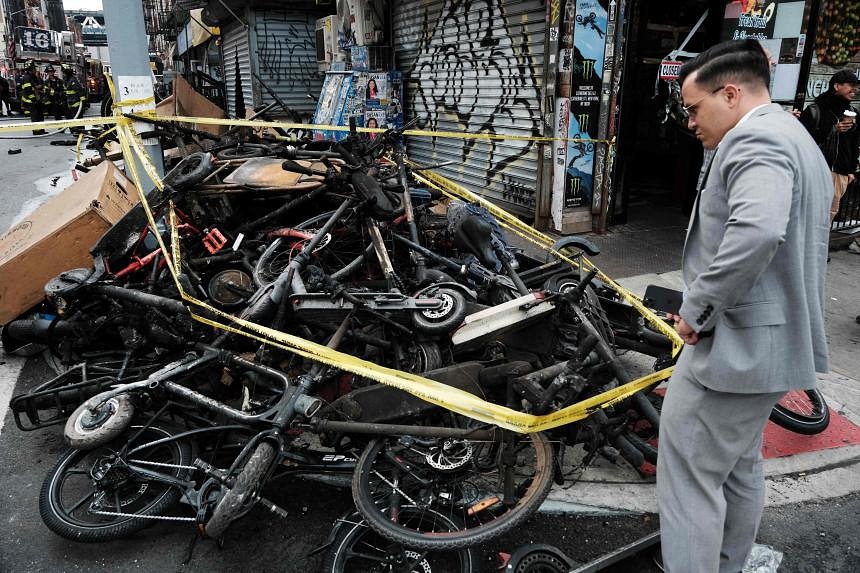SAN FRANCISCO - Two people jumped out of an apartment complex window in the Tenderloin neighbourhood of San Francisco to escape a fire that was spreading in their unit on Monday.
One of them was seriously injured and taken to a hospital burn centre, officials said.
The blaze was probably caused by an overheated e-scooter battery that firefighters later spotted plugged into a charger near the unit’s front door, according to Captain Jonathan Baxter, a spokesman for the San Francisco Fire Department.
It was the 24th fire in San Francisco in 2023 that has been linked to rechargeable batteries, he said.
The city isn’t alone. Fires associated with rechargeable batteries have had a devastating effect in New York City (NYC), ripping through buildings, including public housing complexes and luxury towers – and have killed more than 20 people there since 2021.
“Fortunately, we’re not seeing it to that same degree here in San Francisco,” Capt Baxter said. “However, one fire is one too many.”
Battery-related fires have increased steadily in San Francisco as e-bikes and e-scooters have proliferated in recent years.
According to the Fire Department, there have been 202 battery fires in the city since 2017, killing one person and injuring eight. Fifty-eight of them broke out in 2022, up from 13 in 2017, and 2023 is on a pace to equal or exceed 2022.
The figures include fires linked to rechargeable batteries used in e-scooters and e-bikes (the most common culprits), as well as electric cars, motorcycles and skateboards.
While dozens of structures have been damaged, a majority of the fires have erupted at homeless encampments, where, Capt Baxter said, people are probably tinkering with electric scooters and other vehicles in ways that make them more likely to burst into flames.
Off-market, refurbished, damaged or improperly charged lithium-ion batteries can explode, igniting fast-moving fires that are difficult to extinguish.
Lithium-ion batteries are also used in computers and cellphones, but so-called micro-mobility vehicle batteries are bigger and tend to be damaged by a lot of wear and tear, experts say.
“All it takes is for one small battery cell to be defective, overcharged or damaged, and a tremendous amount of energy is released in the form of heat and toxic flammable gases all at once,” Mr Daniel Murray, the New York Fire Department’s chief of hazmat operations, told The New York Times.
E-bikes and e-scooters are less regulated than electric cars, which start fewer fires even though they require far more energy. Hoping to get ahead of the fire problem, New York will ban the sale of e-bikes and similar devices that do not meet recognised safety standards, starting in September. It’s the first American city to do that.
Officials in San Francisco are warning residents not to charge e-bikes or e-scooters while they are asleep, or to use any charging device other than those made by the bike or scooter’s manufacturer.
And they say that if a battery fire does erupt in your home, don’t try to put it out yourself – you probably can’t. Instead, evacuate right away and call 911. NYTIMES



Recommended Comments
Join the conversation
You can post now and register later. If you have an account, sign in now to post with your account.
Note: Your post will require moderator approval before it will be visible.